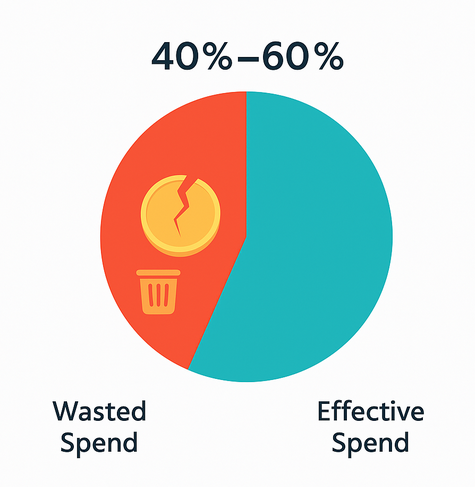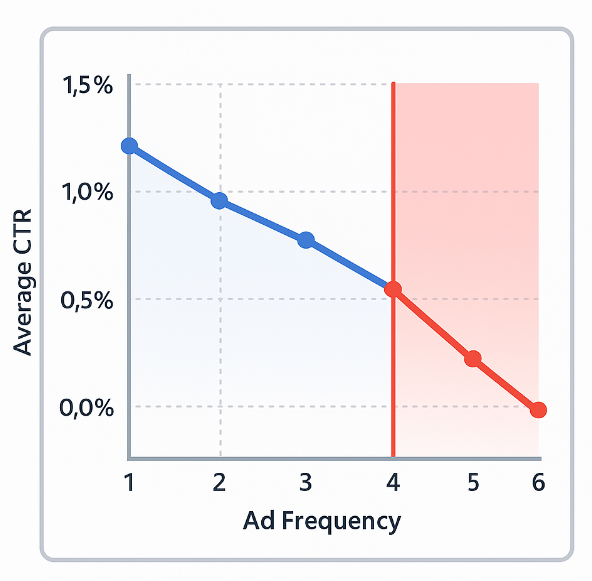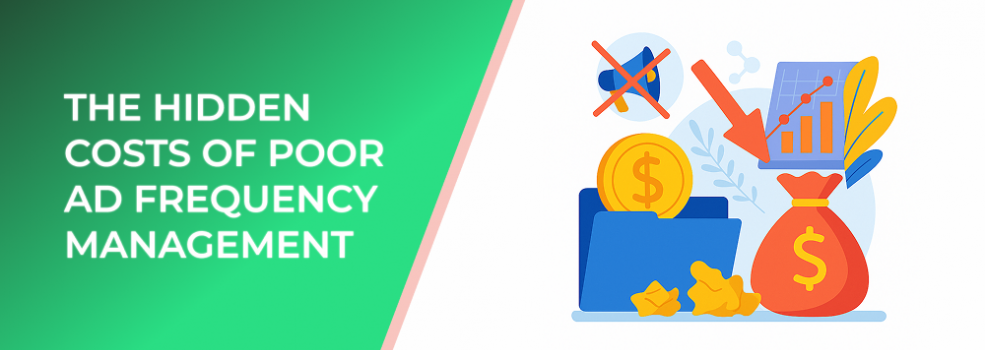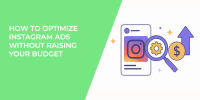Ad frequency refers to how many times a single user sees your ad within a given period. While repetition is necessary for brand recall, excessive exposure can lead to ad fatigue, wasted budget, and declining engagement. According to Facebook’s data, ad recall increases by up to 80% after two exposures, but after five or more, engagement rates can drop by over 20%.
When ad frequency is not optimized, marketers often experience diminishing returns—each additional impression costs more but delivers less impact. This phenomenon directly affects ad performance, cost efficiency, and audience perception.
The Financial Impact of Frequency Mismanagement
Poor frequency management leads to inefficiencies that quietly drain your ad budget:

Between 40 % and 60 % of digital ad budgets are lost to inefficiencies and overexposure
-
Wasted Spend: Studies show that as much as 34% of digital ad budgets are lost due to overexposure. Users who’ve already seen your ad multiple times are less likely to take action, yet you continue paying for those impressions.
-
Decreased ROI: When your cost per action (CPA) rises due to over-frequency, even well-targeted campaigns become less profitable.
-
Audience Burnout: Overexposed audiences may develop negative sentiment toward your brand. Nielsen reports that excessive repetition can reduce brand favorability by up to 15%.
Managing frequency isn’t just about saving money—it’s about maintaining a positive user experience and protecting long-term brand equity.
How to Identify Frequency Problems
Signs that your campaigns may be suffering from frequency issues include:
-
Falling Click-Through Rates (CTR): A consistent drop in CTR over time often signals ad fatigue.
-
Rising CPA or CPM: When costs rise without a corresponding increase in conversions, over-frequency could be to blame.
-
Negative Feedback or Hidden Ads: Users start hiding or reporting ads they see too often.

Click-through rate (CTR) can fall by up to 50% once ad frequency exceeds four exposures
Using analytics tools within platforms like LeadEnforce can help you monitor impressions per user, detect inefficiencies, and adjust your delivery strategies in real time.
How to Fix Ad Frequency Issues
Effective frequency management requires a balance between exposure and novelty. Here are some actionable strategies:
-
Set Frequency Caps: Define how many times your ad should appear to a single user within a campaign’s duration.
-
Rotate Creative Assets: Refresh your visuals and copy regularly to prevent ad fatigue.
-
Segment Your Audiences: Separate high-engagement audiences from low-performing ones and adjust frequency thresholds accordingly.
-
Leverage Retargeting Wisely: Use LeadEnforce’s retargeting tools to show relevant ads without overwhelming your audience.
The Bigger Picture: Sustainable Advertising
Good frequency management creates a healthier advertising ecosystem. When users see well-timed, relevant ads, they’re more likely to engage positively. This builds trust and improves campaign longevity.
Brands that actively manage ad frequency can reduce wasted impressions by up to 25%, improve CTR by 18%, and extend the effectiveness of their campaigns by several weeks.

